Gelenium: description and varieties, planting and care

Gelenium is considered one of the most beautiful garden plants. Its name is associated with a very interesting legend: it bears the name of the beautiful Queen Helena, the wife of Tsar Menelaus. This decorative flower is very popular with gardeners because of its unpretentious care. To properly grow this plant in the open field, you need to know the planting conditions for each variety, as well as fertilize, water and prune it in a timely manner.
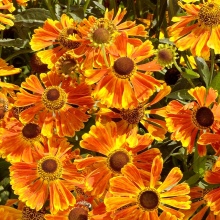
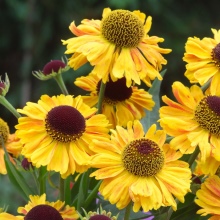
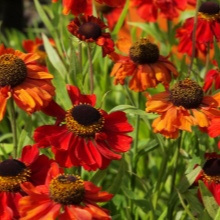
Peculiarities
Gelenium is a herbaceous bush that can be both perennial and annual. This beautiful flower is native to Central and North America.... Today, there are more than 30 types of helenium, each of which has its own description. These herbaceous plants differ in one feature - with the onset of winter, their peduncles die off simultaneously with the roots. But on the underground part of the stems in the fall, buds are formed, forming rhizomes with a leaf rosette, which the next year gives a new flowering stem.
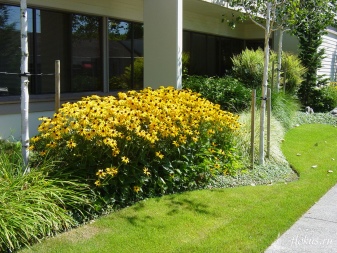
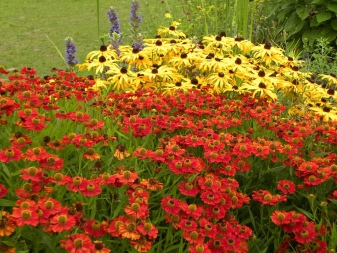
The plant itself can grow up to 160 cm in height, its stems are straight and have branching at the top. Gelenium leaves are lanceolate, they are located on the stem in the next order. The flowers of the shrub are solitary, they are formed from inflorescences-baskets. Inflorescences can have different colors. As a rule, the marginal (reed) flowers are colored brown, purple, orange, and the central (tubular) flowers are yellow.
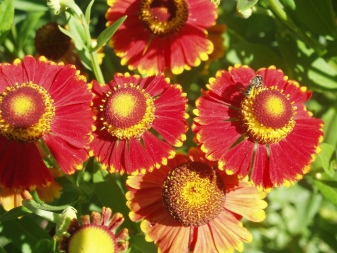
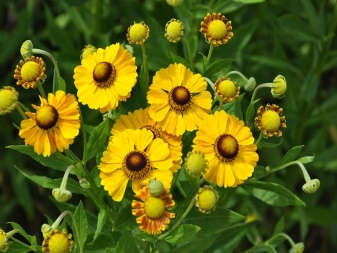
After flowering, oblong-cylindrical achenes appear on the plant, which have a pubescent appearance.
Geleniums do not like partial shade and prefer to grow in areas well-lit by the sun. This is important to consider for novice gardeners. In addition, it is important to know that the flower must be planted in areas with fertile soil. For the rest, it is unpretentious and its cultivation in summer cottages does not require much work.
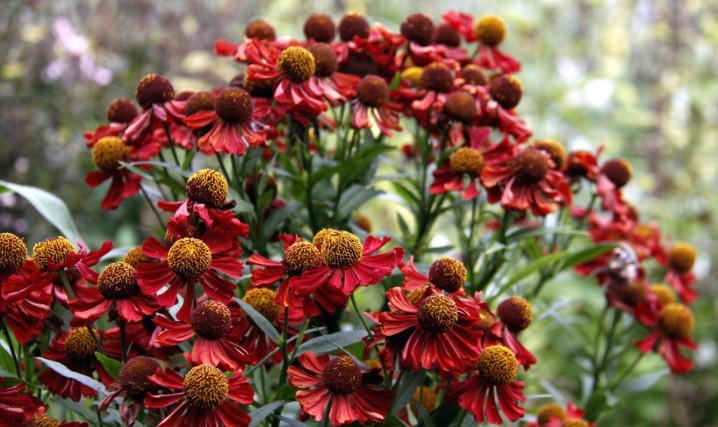
Types and varieties
The popularity of gelenium is explained by its unusually long flowering period, during which it becomes a bright decoration of flower beds and flower beds, delighting with its beauty until late autumn. The genus Helenium has several dozen species, but only a few of them have been introduced into culture. These are Helenium autumnale (autumn helenium), H. hoopesii (Hupa helenium) and hybrid. The most common varieties of this plant include the following.
- "Rubintswerg". It looks like a dense bush, reaching a height of 65 cm. The flowers are ruby-colored baskets, they begin to open at the end of July. This variety is chosen for planting in gardens in the background of large flower beds, which require bright decoration.
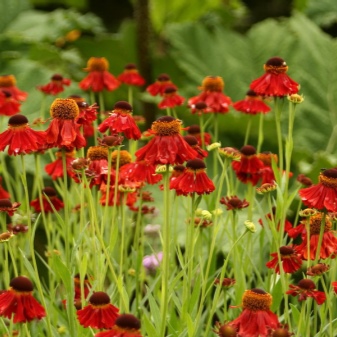
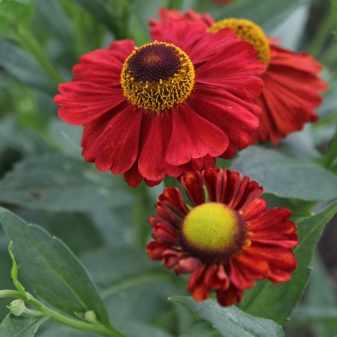
- Salsa. It is a compact but lush plant consisting of many daisies. The height of this gelenium ranges from 45 to 50 cm. The shrub can grow up to 50 cm wide. During flowering (from July to September), flowers of a red-coral shade appear on the plant, with golden or yellow cones in the middle. Suitable for decorating rock gardens and flower beds.
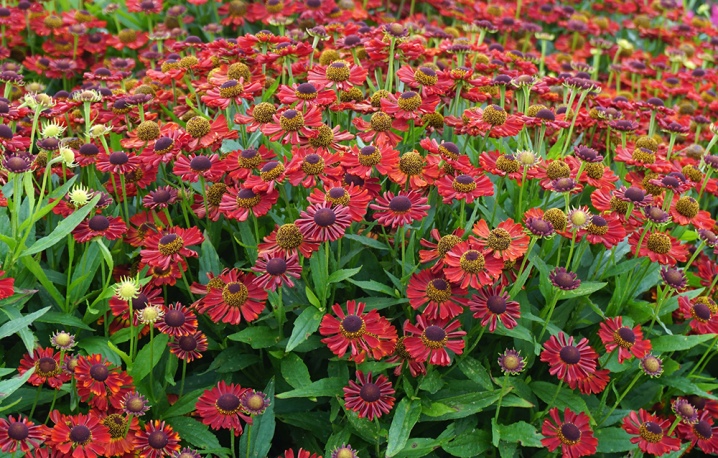
- Fuego ("Fuego"). This is a new hybrid that growers like for its short stature (height does not exceed 45 cm) and bright color. Flowers at "Fuego" are flat and wheel-shaped, they are colored orange and have yellowish enlightenment along the edges.This hybrid is very whimsical to care for, as it requires a lot of moisture, light and prefers to grow exclusively in fertile soil. It is usually planted singly or in small groups near buildings, near stone (brick) fences and ornamental shrubs.
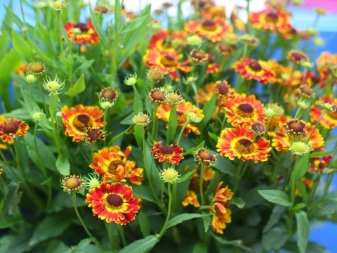

The flower also looks good in autumn bouquets.
Special attention should be paid to such varieties as Ruby Tuesday (red helenium), Ruby charm, Ruby Today, Rubinzwerg, Hot lava and Sombrero. They are red.


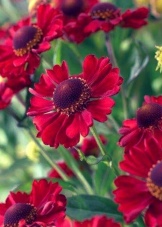
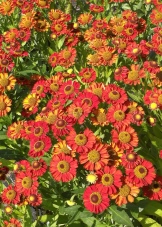
Yellow color is typical for the following varieties.
- Moerheim Beauty. This is a low-growing garden helenium, growing up to 80 cm in height. Its flowers are in the form of baskets, the diameter of which is 6 cm. The flowering period of the plant is short, starting in July and ending in August.
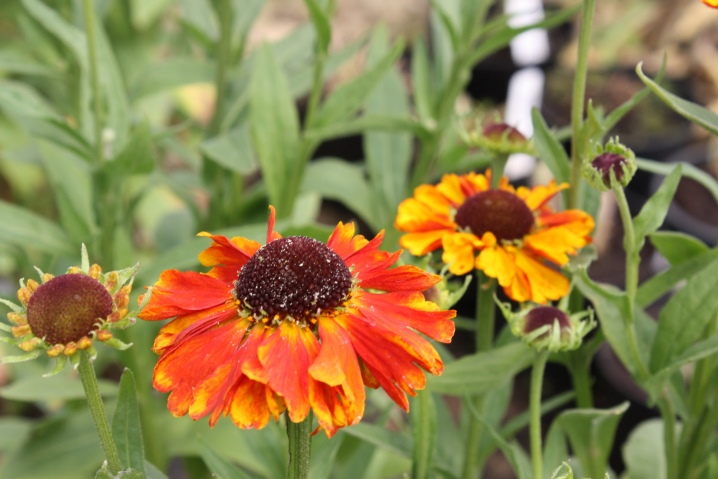
- Ranchera. It is a medium-sized shrub, which from the end of July is covered with numerous buds 5-6 cm in diameter. The middle of the inflorescences is brown.

- "Poncho". The height of plants in this variety does not exceed 140 cm. The flowers are bright yellow in color, their middle is brown.
Used in landscape design to decorate flower beds and vertical landscaping.
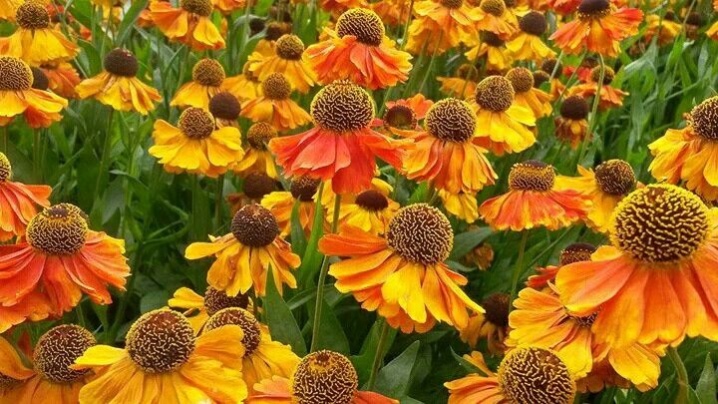
- Helena Gold. These are tall plants that can reach a height of 180 cm. The flowering time for helenium begins in mid-August and lasts until the first frost.

There are also variety names such as Betty, Chelsea, Voltraut, Mooreheim Beauty and Bandera. They are dark brown in color, with red streaks along the edges of the flowers.
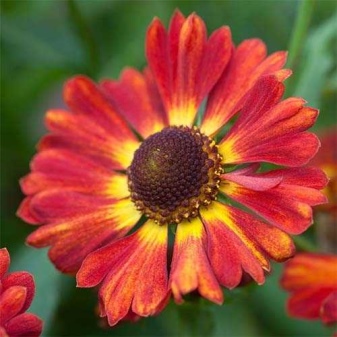
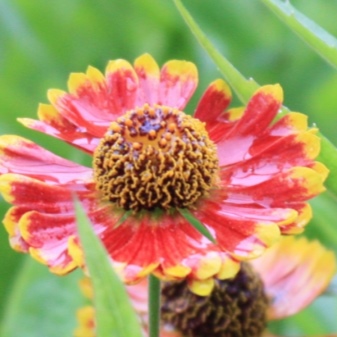
All of the above varieties are special in their own way, so each of them can become a real decoration for both large and small garden plots.
How to plant?
Planting gelenium is carried out in open ground, while it is advisable for the plant to choose sunny places in an area where there is access to irrigation.
When decorating large flower growers, it is also important to take into account that this shrub is quite tall. Therefore, it is not recommended to plant it next to light-loving flowers, since they will be in the shade.
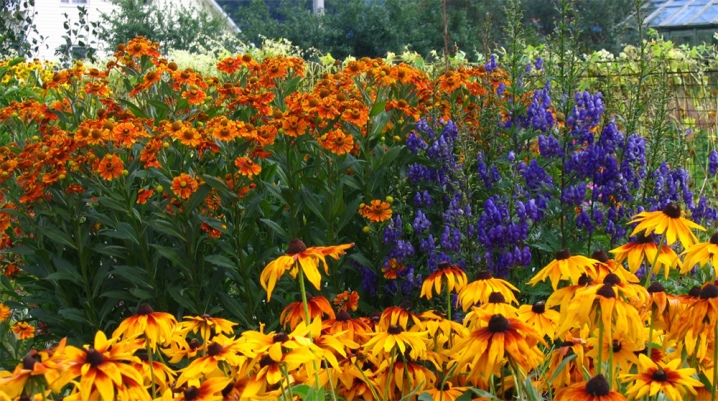
Optimal timing
Some summer residents grow helenium from seedlings, sowing seeds in planting containers in February-March. But this is too laborious a process that requires a certain amount of experience, but for beginner gardeners it will be easier to plant a plant in open ground. This should be done in early May or June, when the flower will not be afraid of night frosts. The seed is sown in fertile soil, it must be well-drained, with a neutral reaction.

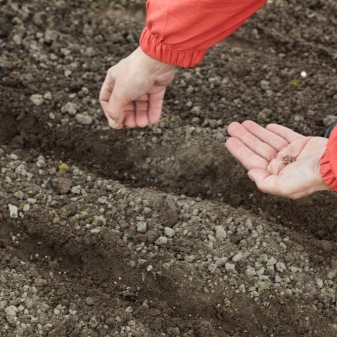
Sowing seeds for the winter is not recommended, since they will not be able to withstand the winter cold and will die.
Seat selection
Gelenium is a light-loving ornamental plant that can grow successfully in shaded areas. The only thing is that in this case, the contrast of the color of the petals may decrease. If you plan to plant tall varieties, then you should choose places on the site that are well protected from strong gusts of wind. Since in the wild, helenium often grows in meadows with moderately moist soil, then in the garden area it needs to select places as close as possible to them. It is not recommended to plant a flower on hills and next to garden trees, as helenium can lose its decorative qualities over time.
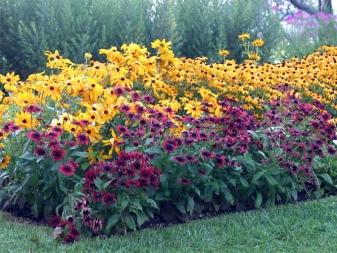

General rules
In warm regions of the country, helenium can be sown directly into open ground. After a place for planting has been selected in the garden plot, individual pits are prepared separately for each seed. The interval between the pits should be 30 cm. Then the prepared seed is planted and lightly sprinkled with a layer of earth. To protect the seeds from the negative effects of low temperatures, you will have to additionally make a shelter. After the appearance of the first leaves, the covering material is removed, and the soil is mulched with peat, sawdust or humus.
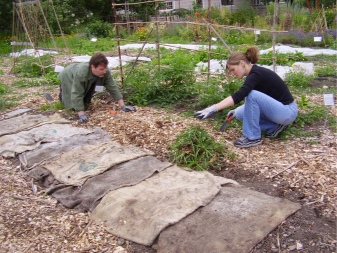
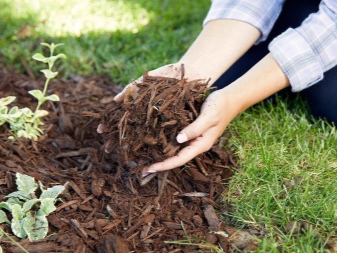
When planting in open ground is performed from seedlings, then first of all, pits are prepared, the dimensions of which should be slightly larger than the rhizomes of the plant. Before placing the seedlings in the hole, they should be held in water for several minutes. This will allow the roots to absorb moisture. Then the seedlings are carefully placed in a hole, at the same depth as in the pot. When planting a flower in a group, it is necessary to maintain a distance of 35 cm between the rows, and 30 cm between the seedlings themselves.
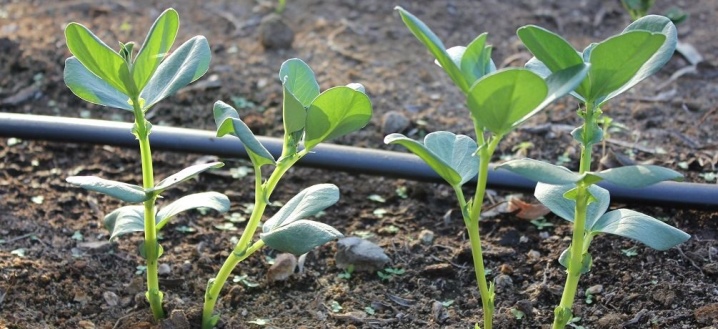
The planting ends with soil mulching, during which the hole is covered from above with humus or peat. The disadvantage of planting helenium in open ground with seedlings is that it can bloom only in the second year. When choosing between seedling planting and sowing seeds, it should be borne in mind that the first method is best suited for reproduction, and the second is only for species varieties, otherwise their parental characteristics will not be preserved.
How to take care of it properly?
Despite the fact that helenium, like all representatives of the Astrovs, is not a whimsical plant to grow and can grow in any conditions, it still needs some care. Therefore, before we start growing this flower, you should familiarize yourself with all its varietal characteristics.
Watering
Timely watering is important for absolutely all plants, and helenium is no exception. Due to a lack of moisture in the soil, this flower begins to ache and may even die. Experienced gardeners recommend watering the plant in moderation, but in summer, when there is a drought, watering should be done more often and more abundantly.
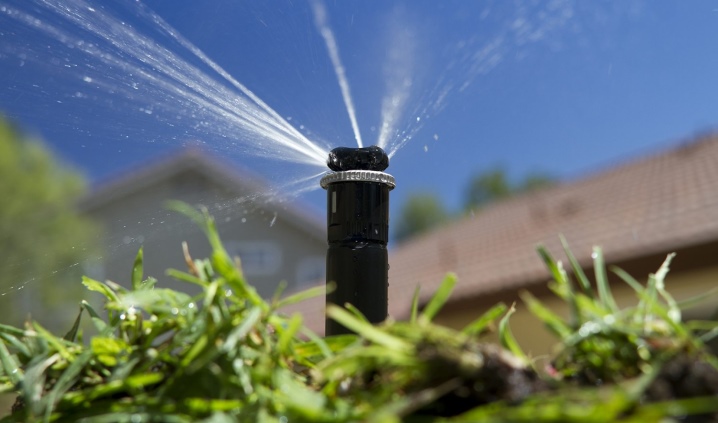
Top dressing
In order for helenium to become an original decoration of the garden, it must be fertilized three times a year, giving preference to mineral and organic compounds. The very first feeding is usually carried out at the beginning of May, for this, 10 liters of warm water are poured into the container and 1 tbsp is diluted in it. l. potassium sulfate, urea and Effekton fertilizer. For 1 m2, you will need at least 3 liters of solution. The next top dressing is performed during the flowering period of the bush, watering the soil with a mixture, which includes a liquid mullein and Agricola-7. For each 1 m2, no more than three liters of such a mixture will be needed.
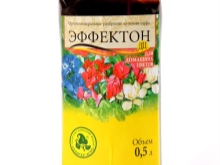

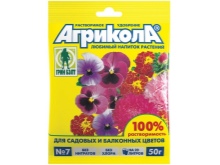
The last feeding should be done at the end of October. To do this, prepare a solution as follows: dilute 1 tbsp in 10 liters of water. l. potassium sulfate and superphosphate. Fertilizer consumption should be 5 liters per square meter.
Loosening and mulching
Since helenium loves moist soil, during each watering it should not be allowed to stagnate water, performing loosening. This will promote good water permeability and provide the roots with oxygen. Deep loosening should not be done, otherwise the root system of the plant can be damaged. When loosening the soil, one must not forget about removing weeds.
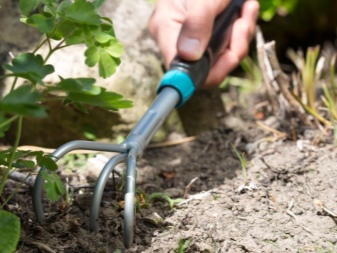

Mulching will also help to simplify flower care, thanks to which the soil will always remain moist and will not be covered with a dry crust. It is carried out simply: first, the site should be thoroughly weeded, then a layer of mulch from humus, sawdust or hay should be laid. In the fall, the mulch needs to be updated.
Pruning
Pruning, which is carried out for sanitary purposes, is also considered to be no less important in caring for helenium. Throughout the season, the plant should be pinched, removing deformed and yellowed shoots and leaves. Besides, in the first year after planting, it is necessary to remove all inflorescences. This will ensure a wild bloom for the next year. In order for the bush to be more branched, it is also recommended to pinch the tops of the pagons. This should be done in the spring.
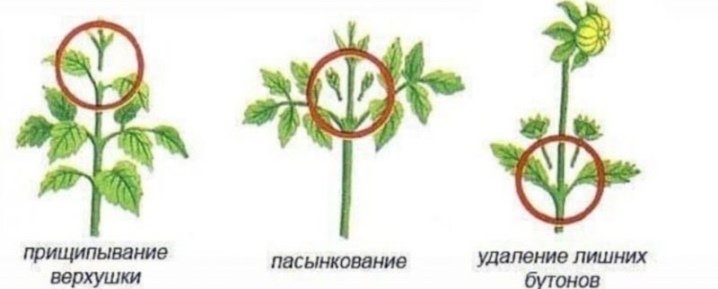
Transfer
All types of helenium can comfortably develop and grow in one place without transplanting for 4-5 years. After that, the bushes are recommended to be transplanted to another place, contributing to their rejuvenation. It is advisable to carry out the transplanting work in the fall, before the plant begins to prepare for wintering.You can also transplant the bushes in the spring, but before the formation of buds.
The helenium transplant procedure is simple. First, you need to dig a bush under the root and carefully remove it from the hole without damaging the earthen lump. Then you need to carefully cut off the overgrown roots, old and deformed parts of the plant. The bush prepared in this way is planted in a new place in a previously prepared hole up to 30 cm deep. It is important to ensure that the root collar remains on the surface. The transplant ends by filling the plant with a fertile layer of soil, abundant watering and mulching.
After flowering
Many gardeners choose to harvest gelenium seeds in the fall, as they can be an excellent seed for the next year. This should be done after flowering, before the onset of prolonged rains. It is very simple to determine the ripening of seeds; blackened tubules and darkened reed flowers will tell you about this.
At the same time, it is worth noting that improperly collected seeds may not sprout in the spring, so experts recommend purchasing them in stores.
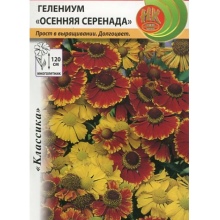


Also, after flowering, you need to prepare the plant for the winter cold. It is cut to the very surface of the ground, leaving only 15 cm of stems. Then the site is mulched with sawdust, moss and covered with lutrasil on top. It will protect the bush from severe frosts in winters with little snow.
Reproduction methods
Gelenium is a bush that looks like a bunch of individual mini-plants. He, like all perennials, has stems that live only one season, the only thing is that in the fall the root collar of this flower also dies off. By this time, the flowers have time to form buds and small rosettes, which successfully continue to grow and develop the next year. Thanks to this feature, helenium propagates well by cuttings. A self-divided bush only needs to be transplanted to a new place, while forced division of the bush should be carried out from time to time, but at least once every three years.
In addition, in the summer, you can propagate the plant with rooted cuttings. Some gardeners successfully propagate helenium using seeds harvested in the fall. This method is considered less effective, since it does not provide good shoots, and the plant may lose its decorative qualities.
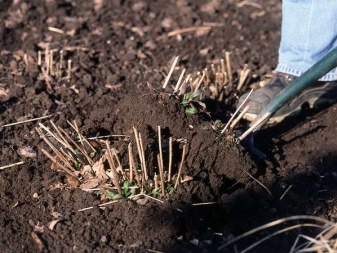
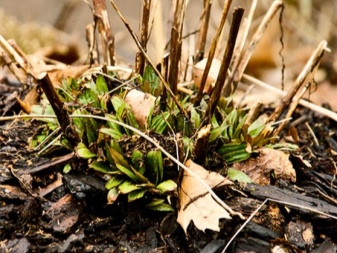
Diseases and pests
This perennial is highly resistant to parasites and diseases, only sometimes he can succumb to such an ailment as a chrysanthemum nematode... It is manifested by damage to the buds and leaves, which leads to their drying out. In order to save healthy bushes in this case, you need to cut and burn all damaged plants on the site. As for pests, the introduction of ground sulfur or slaked lime into the soil under the bushes will help prevent their appearance in the garden.
Use in landscape design
Many gardeners use helenium when decorating landscape design, since this ornamental plant allows you to originally mask buildings and fences. In addition, the flower looks beautiful on a flowerbed with such autumn plants as rudbeckia and delphinium. If you need to create monochromatic flower beds, then helenium can be combined with heuchera, marigolds, goldenrod and all types of garden yarrow. Low varieties of plants are ideal for framing curbs, the only thing is that for this they will have to give the correct shape, timely pruning.
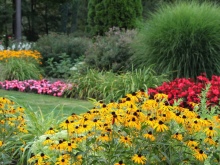

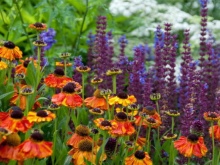
If the garden plot is large and allows you to create a rock garden, then helenium can be planted next to stone decorations, supplemented with other bright plants. These decorative bushes also look good against the background of the opening buds of gladioli and asters. Snow-white daisies will help fill the composition with tenderness.
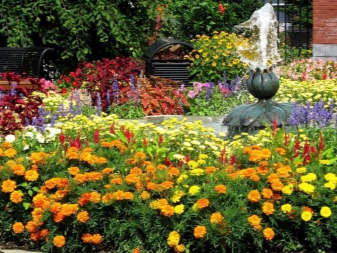
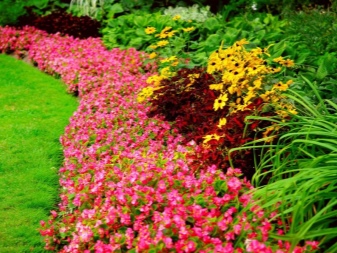
In addition, solar gelenium blooms can be used to create luxurious tapeworms or mixborders.This tall perennial will serve as a chic backdrop for more restrained flowers. The bushes, which occupy the central place in the composition, also look interesting. They need to be supplemented with snow-white and pink shades.
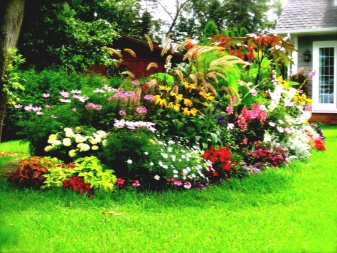
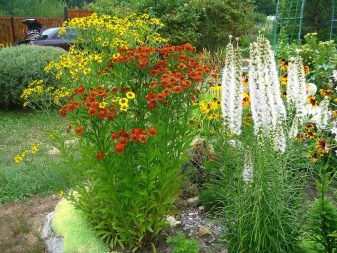
Transplanting and dividing the helenium bush in the video.







































































































The comment was sent successfully.